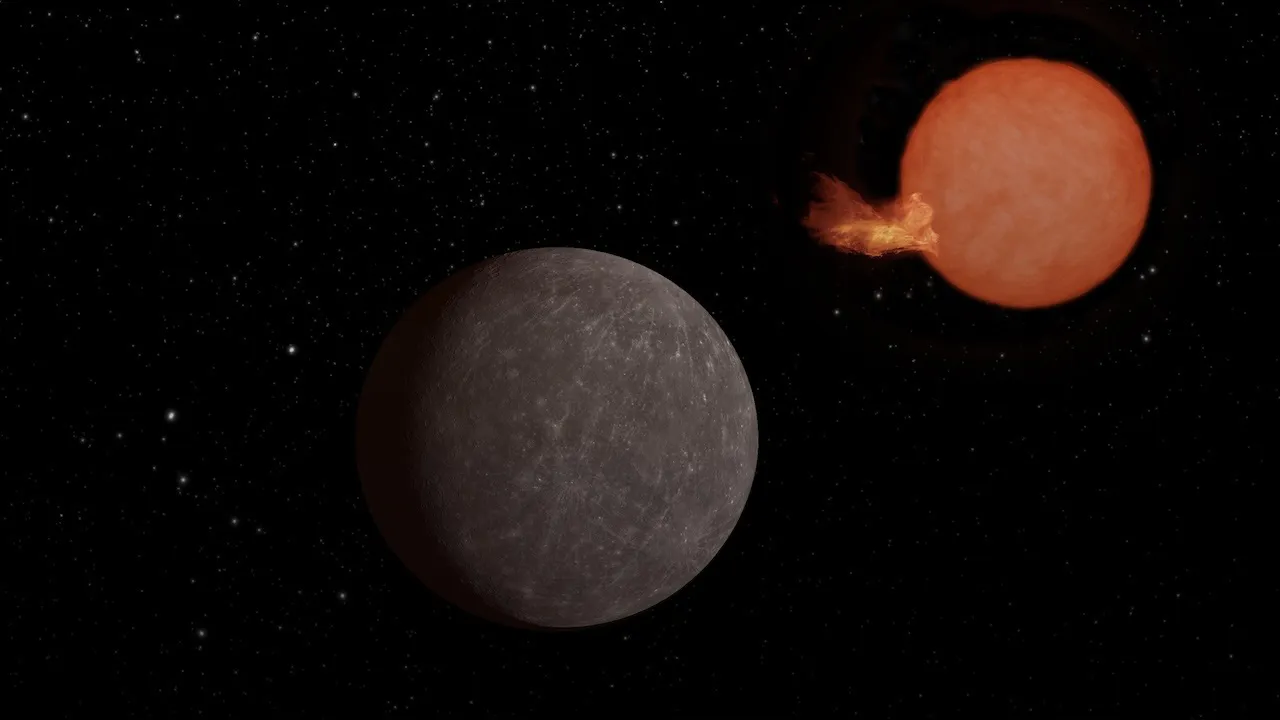NEW DELHI: In an exciting development, scientists have discovered an Earth-sized exoplanet, SPECULOOS-3 b, orbiting an ultra-cool dwarf star approximately 55 light-years from Earth. On the cosmic scale, this distance is relatively close, highlighting the growing potential for discovering more exoplanets in our stellar neighborhood.
SPECULOOS-3 b is nearly identical in size to Earth, offering intriguing possibilities for comparative planetary studies.However, its orbit around its host star is dramatically different from Earth’s year-long journey around the Sun. SPECULOOS-3 b completes a full orbit in just 17 hours, suggesting that it is extremely close to its star.
Due to this proximity, scientists believe that SPECULOOS-3 b is tidally locked. This means that one side of the planet, known as the dayside, constantly faces the star, resulting in perpetual daylight, while the other side, the nightside, is shrouded in eternal darkness. This phenomenon is similar to how the Moon is tidally locked with Earth, always showing the same face to our planet.
The discovery was made by the SPECULOOS (Search for habitable Planets EClipsing ULtra-cOOl Stars) project, an initiative focused on identifying potentially habitable planets around ultra-cool dwarf stars. These stars are smaller and cooler than our Sun, making it easier to detect Earth-sized planets within their habitable zones. The habitable zone is the region around a star where conditions might be right for liquid water to exist, a crucial ingredient for life as we know it.
SPECULOOS-3 b adds to the growing list of Earth-sized exoplanets found in habitable zones, but the extreme conditions on this planet present unique challenges for habitability. The constant daylight on one side and perpetual darkness on the other could create stark temperature differences, potentially affecting atmospheric and surface conditions.
Researchers are eager to conduct further observations to understand the planet’s atmosphere and its potential to support life. Future studies will focus on characterizing the atmospheric composition and looking for signs of habitability, such as the presence of water vapor or other biosignatures.
“Finding an Earth-sized planet around an ultra-cool star is a step forward in our quest to find habitable worlds beyond our solar system,” said a representative from the SPECULOOS project. This discovery not only enhances our understanding of planetary systems around different types of stars but also brings us closer to answering the age-old question of whether we are alone in the universe.
As technology and methods for detecting exoplanets continue to improve, the search for potentially habitable worlds becomes more promising. SPECULOOS-3 b represents a significant milestone in this ongoing journey, offering a glimpse into the diverse range of planets that exist in our galaxy.
SPECULOOS-3 b is nearly identical in size to Earth, offering intriguing possibilities for comparative planetary studies.However, its orbit around its host star is dramatically different from Earth’s year-long journey around the Sun. SPECULOOS-3 b completes a full orbit in just 17 hours, suggesting that it is extremely close to its star.
Due to this proximity, scientists believe that SPECULOOS-3 b is tidally locked. This means that one side of the planet, known as the dayside, constantly faces the star, resulting in perpetual daylight, while the other side, the nightside, is shrouded in eternal darkness. This phenomenon is similar to how the Moon is tidally locked with Earth, always showing the same face to our planet.
The discovery was made by the SPECULOOS (Search for habitable Planets EClipsing ULtra-cOOl Stars) project, an initiative focused on identifying potentially habitable planets around ultra-cool dwarf stars. These stars are smaller and cooler than our Sun, making it easier to detect Earth-sized planets within their habitable zones. The habitable zone is the region around a star where conditions might be right for liquid water to exist, a crucial ingredient for life as we know it.
SPECULOOS-3 b adds to the growing list of Earth-sized exoplanets found in habitable zones, but the extreme conditions on this planet present unique challenges for habitability. The constant daylight on one side and perpetual darkness on the other could create stark temperature differences, potentially affecting atmospheric and surface conditions.
Researchers are eager to conduct further observations to understand the planet’s atmosphere and its potential to support life. Future studies will focus on characterizing the atmospheric composition and looking for signs of habitability, such as the presence of water vapor or other biosignatures.
“Finding an Earth-sized planet around an ultra-cool star is a step forward in our quest to find habitable worlds beyond our solar system,” said a representative from the SPECULOOS project. This discovery not only enhances our understanding of planetary systems around different types of stars but also brings us closer to answering the age-old question of whether we are alone in the universe.
As technology and methods for detecting exoplanets continue to improve, the search for potentially habitable worlds becomes more promising. SPECULOOS-3 b represents a significant milestone in this ongoing journey, offering a glimpse into the diverse range of planets that exist in our galaxy.
Denial of responsibility! Swift Telecast is an automatic aggregator of the all world’s media. In each content, the hyperlink to the primary source is specified. All trademarks belong to their rightful owners, all materials to their authors. If you are the owner of the content and do not want us to publish your materials, please contact us by email – swifttelecast.com. The content will be deleted within 24 hours.


